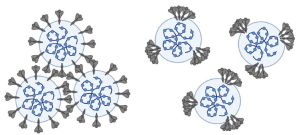Feasibility of brewer’s spent yeast (BSY) microcapsules as a targeted oral drug delivery system
A group from REQUIMTE-LAQV, Department of Chemistry, University of Aveiro, Portugal, etc. has reported about feasibility of brewer’s spent yeast (BSY) microcapsules as a targeted oral drug delivery system.
https://www.ncbi.nlm.nih.gov/pmc/articles/PMC9857821/
The BSY microcapsules were extracted by an alkaline extraction method with 1 M KOH or 4 M KOH or using a subcritical Water Extraction (SWE) method at 180℃ or 200℃. Resultant microcapsules were in vitro digested (IVD) with mimicking a gastrointestinal digestive condition. The non-digested material, despite some visible agglutination and deformation of the microcapsules, preserved their spherical shape and was enriched in (β1→3)-glucans.
The soluble polysaccharides released during IVD from microcapsules obtained by SWE interact with Dectin-1, those released from the 1 M KOH microcapsules interact with DC-SIGN, and 4 M KOH and 180℃SWE microcapsules solubilized polysaccharides interact with Dectin-2.

These results show the potential of BSY microcapsules to be used as an oral drug delivery system for biomedical applications.



 PNA staining in proximal colon
PNA staining in proximal colon 